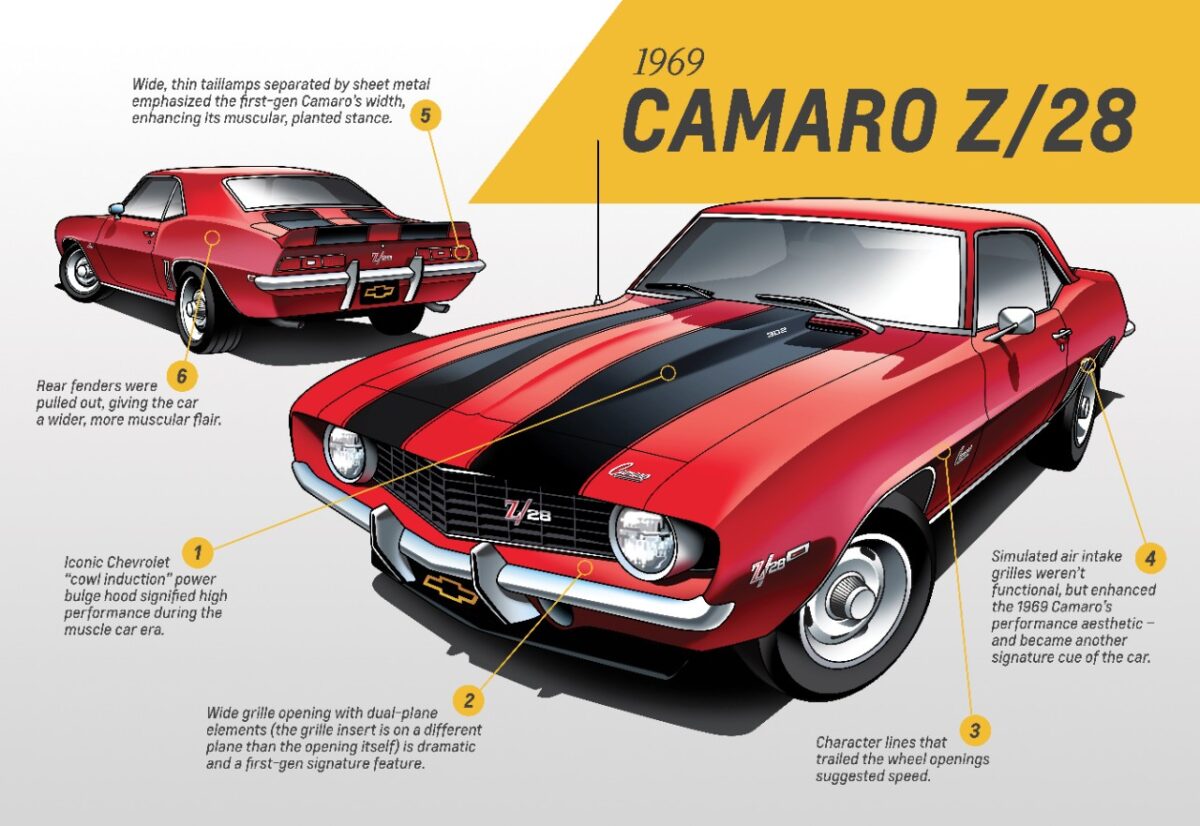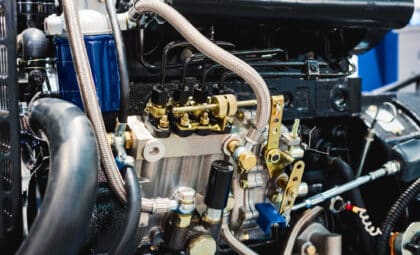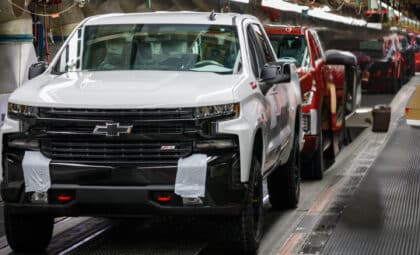In honor of the Camaro completing the final year of its fifth generation, Chevy interviewed five designers who have worked on the Camaro to reflect on the storied sports car’s five distinct eras.
“While Camaro has evolved with cultural and design trends, it has consistently represented the approachable, attainable sports car with an emphasis on fun that’s evident in its styling,” said Ed Welburn, vice president of GM Global Design and one of the five designers interviewed. “As a result, each generation of Camaro has evoked an emotional connection with enthusiasts – connections spanning 48 years, and five generations.”
Chevy begins the series (naturally) by focusing on the first generation Camaro, which only ran from 1967 to 1969.
“The Camaro should not have been a design success, as it was based on an existing architecture and admittedly hurried to market to address the personal coupe revolution occurring with Baby Boomer customers,” Welburn said. “However, the first-generation Camaro delivered a pure, classic proportion that will forever be regarded as one of the best-looking cars of its time. It was very lean and muscular, with comparatively minor embellishments for high-performance models. That was in contrast to some of the brasher competitors during the muscle car era, and it has helped the first-generation Camaro maintain timeless good looks.”
Of the three first-gen models produced, Welburn’s favorite is the 1969 Camaro:
An infographic about the first-gen 1969 Camaro Z/28
“The 1969 model is the iconic Camaro to me,” said Welburn. “From the dual-plane grille design and speed lines stamped into the fenders and doors, it was original and distinctive. It didn’t borrow from any other design and all these years later, it still looks fresh.”
Here are the design analysis highlights Welburn noted about the first generation 1969 Chevy Camaro:
Every effort was made to make it appear wider, sleeker and more muscular
Character lines that trailed the wheel openings gave the car an aura of speed
The rear fenders were pulled out, giving the car a wider, more muscular flair
Dual-plane grille added visual interest to the nose and became a trademark of Camaro design
Wide taillights, with body-color sheet metal between them, exaggerated the car’s width
Simulated grilles forward of the rear fenders provided accent detail and became one of the 1969 Camaro’s focal styling cues
Chevrolet-signature “cowl induction” power bulge hood signified the muscle beneath it, from high-revving Small Block V-8 to high-torque Big Block V-8 engines.
Stay tuned, as we continue this series next month with the second generation Camaro, which ran from 1970 to 1981.
The News Wheel is a digital auto magazine providing readers with a fresh perspective on the latest car news. We’re located in the heart of America (Dayton, Ohio) and our goal is to deliver an entertaining and informative perspective on what’s trending in the automotive world. See more articles from The News Wheel.











